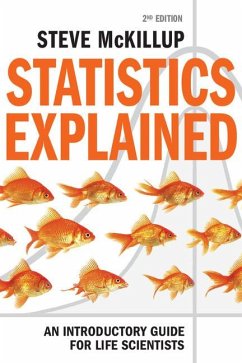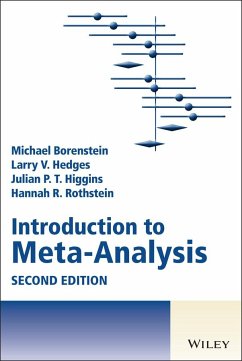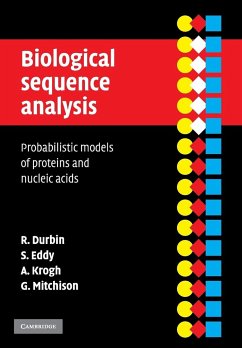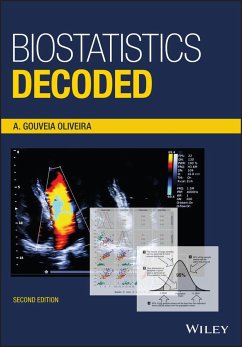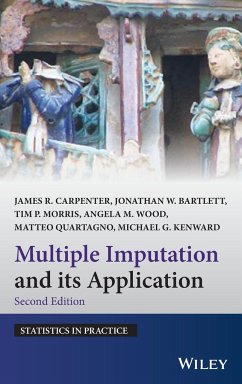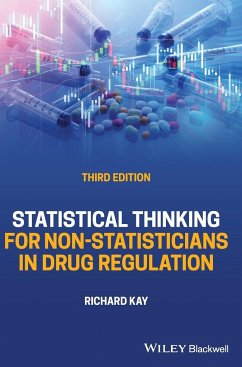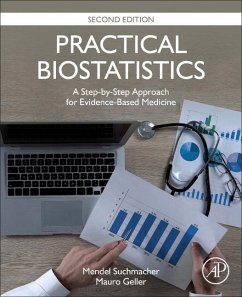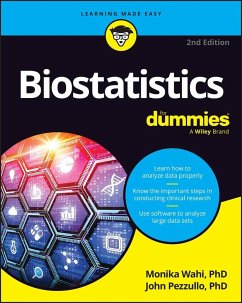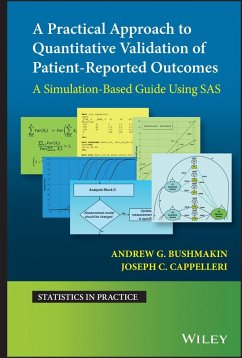
Alan Grafen (, Professor of Theoretical Biology, University of OxfoRosie S. Hails (, Principal Scientific Officer, NERC Centre for Eco
Broschiertes Buch
Modern Statistics for the Life Sciences
Versandkostenfrei!
Versandfertig in 1-2 Wochen

PAYBACK Punkte
73 °P sammeln!





Teaching statistics in a different way, this book provides several methods of model formulae and the General Linear Model. It is aimed at undergraduate students in the life sciences, and also for many graduate students.
Degrees in Experimental Psychology, Economics and Zoology have exposed Professor Alan Grafen to various different statistical traditions, and also to his main research interest in how adaptive complexity arises through natural selection. He has been interested in statistics since he was an undergraduate, learned mathematical theory of statistics as a graduate student, and encountered modern statistics in the package GLIM as a research student. The impetus to produce a systematic introduction for undergraduates to model formulae and the General Linear Model came from his appointment in 1989 to a lectureship in Quantitative Biology at Oxford University. Degrees in Zoology, Pest Management and Population Dynamics led Dr Rosie Hails toward the more quantitative areas of ecology. Most of her research career has developed the theme of the potential impacts of biological invasions, with reference to both natural invasions and genetically modified organisms. In the early 1990s, she was involved in the first experiments monitoring the behaviour and population dynamics of transgenic plants in natural habitats across the UK with Professor Mick Crawley. More recently, at the NERC Centre for Ecology and Hydrology in Oxford, her research themes have included the dynamics of wildlife diseases as well as plants. In moving to Oxford, Dr Hails became involved in teaching Professor Alan Grafen's undergraduate course, principally through a position at St Anne's College.
Produktdetails
- Verlag: Oxford University Press
- Seitenzahl: 368
- Erscheinungstermin: 1. Mai 2002
- Englisch
- Abmessung: 244mm x 170mm x 20mm
- Gewicht: 630g
- ISBN-13: 9780199252312
- ISBN-10: 0199252319
- Artikelnr.: 14945051
Herstellerkennzeichnung
Libri GmbH
Europaallee 1
36244 Bad Hersfeld
gpsr@libri.de
'The book is well laid out and concepts are very well explained by making effective use of diagrams and geometric representations. There are many analyses of example data sets to ilustrate the application the methods and the interpretation of the output'. Biometrics 59, 200-209, March 2003.
Für dieses Produkt wurde noch keine Bewertung abgegeben. Wir würden uns sehr freuen, wenn du die erste Bewertung schreibst!
Eine Bewertung schreiben
Eine Bewertung schreiben
Andere Kunden interessierten sich für


